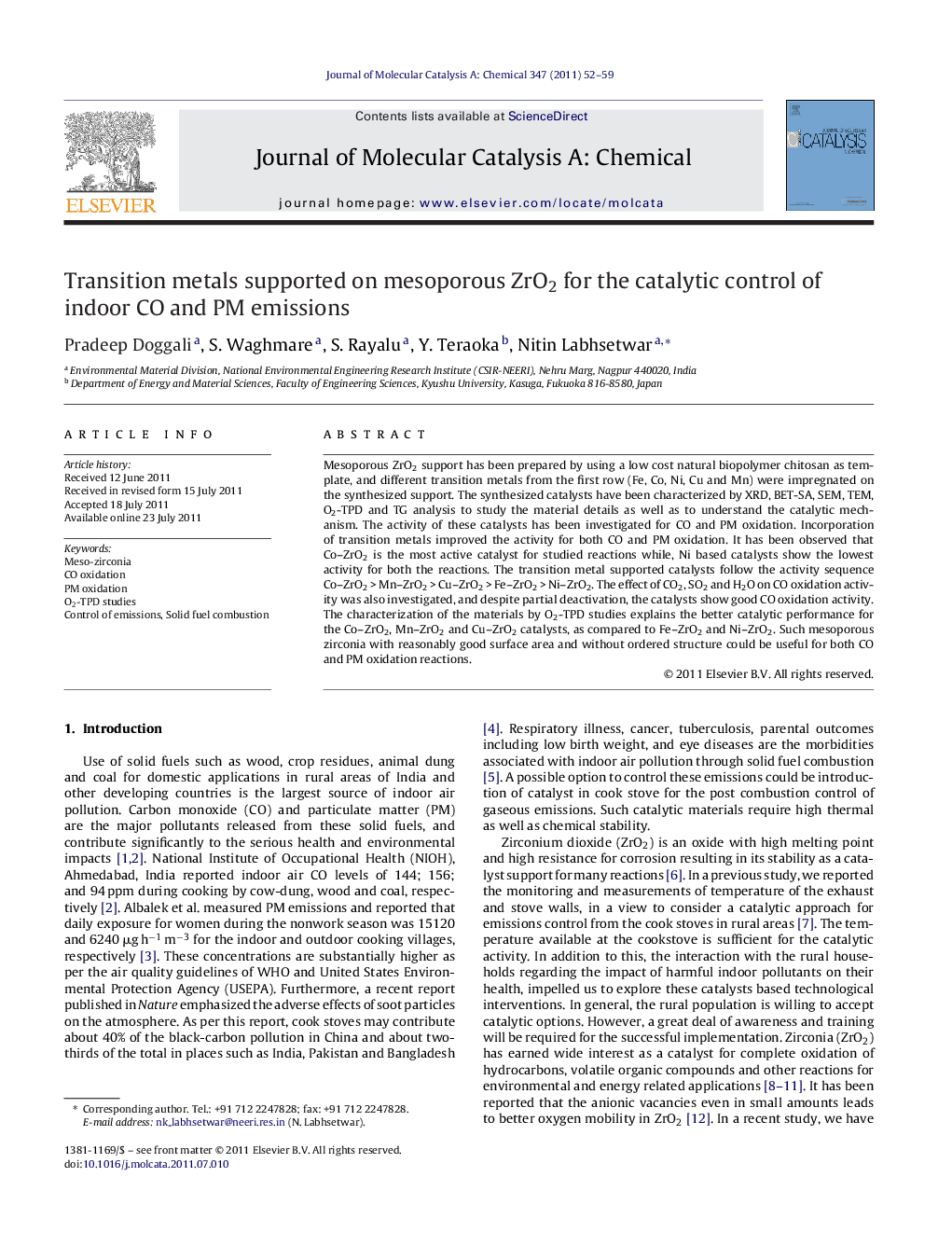| Article ID | Journal | Published Year | Pages | File Type |
|---|---|---|---|---|
| 66274 | Journal of Molecular Catalysis A: Chemical | 2011 | 8 Pages |
Mesoporous ZrO2 support has been prepared by using a low cost natural biopolymer chitosan as template, and different transition metals from the first row (Fe, Co, Ni, Cu and Mn) were impregnated on the synthesized support. The synthesized catalysts have been characterized by XRD, BET-SA, SEM, TEM, O2-TPD and TG analysis to study the material details as well as to understand the catalytic mechanism. The activity of these catalysts has been investigated for CO and PM oxidation. Incorporation of transition metals improved the activity for both CO and PM oxidation. It has been observed that Co–ZrO2 is the most active catalyst for studied reactions while, Ni based catalysts show the lowest activity for both the reactions. The transition metal supported catalysts follow the activity sequence Co–ZrO2 > Mn–ZrO2 > Cu–ZrO2 > Fe–ZrO2 > Ni–ZrO2. The effect of CO2, SO2 and H2O on CO oxidation activity was also investigated, and despite partial deactivation, the catalysts show good CO oxidation activity. The characterization of the materials by O2-TPD studies explains the better catalytic performance for the Co–ZrO2, Mn–ZrO2 and Cu–ZrO2 catalysts, as compared to Fe–ZrO2 and Ni–ZrO2. Such mesoporous zirconia with reasonably good surface area and without ordered structure could be useful for both CO and PM oxidation reactions.
Graphical abstractFigure optionsDownload full-size imageDownload high-quality image (158 K)Download as PowerPoint slideHighlights► Mesoporous ZrO2 catalysts show superior activity than commercial catalysts. ► The effect of CO2, SO2 and H2O on CO oxidation activity was also investigated. ► Despite partial deactivation by SO2, the catalysts show good CO oxidation activity. ► Surface area is probably not so important for PM oxidation reaction. ► O2-TPD contributes to understand the different catalytic performances of synthesized catalysts.
